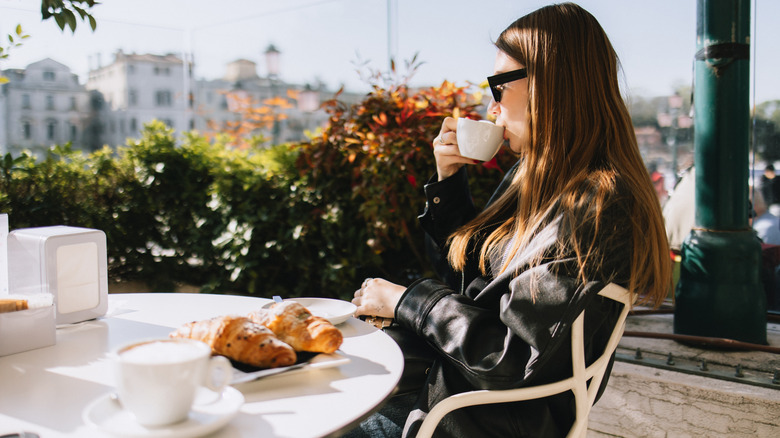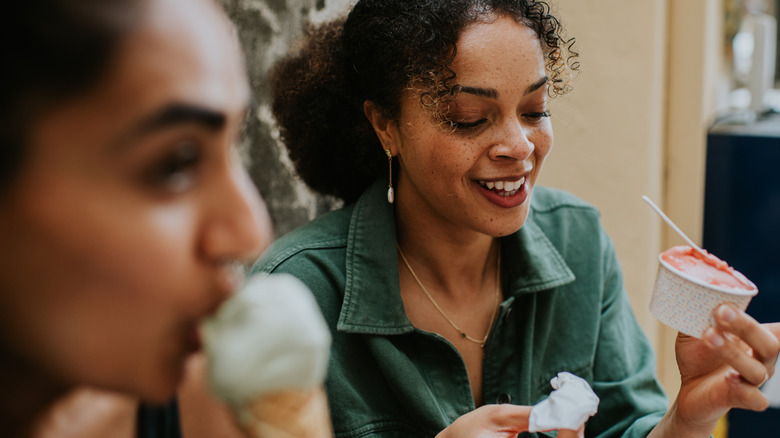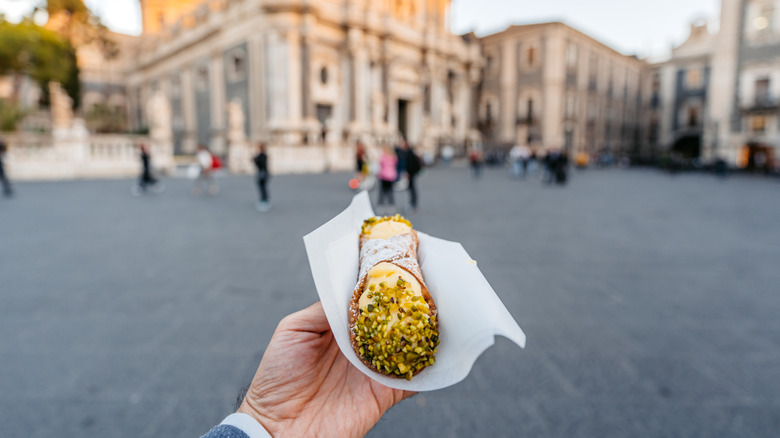The Unexpected Truth About The 'Napkin Dispensers' You'll Find At Restaurants In Italy
We may receive a commission on purchases made from links.
After a busy morning of sightseeing in Italy, you probably need to refuel with a caffeinated beverage and some scrumptious pastries. You pick a café and sit down with your coffee (which costs more than standing with it here), and cannoli or babà (or both) and dig in. While getting into the Italian spirit and using your hands to express yourself to your travel partner, you splash a bit of coffee on the table. You reach for the napkin dispenser, but lo and behold, these waxy napkins don't absorb a thing. In fact, they seem to do the opposite of helping you clean up a spill. As it turns out, there is a very good reason for this. What you took out of the dispenser wasn't a normal napkin. That waxy piece of paper is called a tovagliolini, or little napkin. Like anyone who hasn't encountered them before, you probably wonder why anyone would have a napkin that doesn't do what napkins are designed to do. However, these sheets were designed for something else entirely.
A tovagliolini isn't meant for spills at all. These bar napkins are meant to keep your fingers from getting sticky when you hold and eat your delicious dessert. They're specially made with a coating of polyamide-epichlorohydrin resin (PAE) and embossed so that the ooey gooey goodness in your sugary, buttery dessert slides right off of them. They're also used to pick up the dessert while eating it. A normal napkin would just stick to the frosting or glaze, either getting bits of paper in your mouth or stealing that sticky goodness from your tasty treat.
All about the Italian café staple, tovagliolini
If tovagliolini and their use sounds familiar to you, perhaps you've seen a social media post about this peculiar napkin aimed at travelers heading to Italy. For example, American travel blogger @rivieradreamer, who lives in Italy, posted a viral video explaining what tovagliolini are and what they're used for.
As she demonstrates, the fact that they're in a napkin dispenser can be confusing. That said, we do have something similar in the U.S. If you've ever visited a grocery store or bakery that allows you to pick your own pastry from a case, you've probably seen the wax paper sheets that are often offered so your hands don't get sticky. They're really useful, especially if you're eating your snack on the run. If you use these, you don't have to do that awkward two-finger pinch to hold the donut or sticky bun, so you don't get melted sugar all over your hands. However, one thing you should know about Italian tovagliolini is that you can't throw them out with organic waste like you can with regular paper napkins. They have plastic coating, and some places are actually getting rid of them for that reason and opting for greener alternatives.
Café culture and differences between Italy and the United States
Using tovagliolini for your sticky desserts is great for keeping your fingers from getting covered in sugar. However, what if you want a regular napkin to clean up spilled coffee or wipe down a table? All you have to do is ask the people who work at the café. You would say, "Posso avere un tovagliolo, per favore?" However, you might also want to bring some wet wipes with you, like the WipeEssentials Hand Sanitizer Wipes on Amazon. They're antibacterial, so they're also good for wiping down surfaces on planes and in bathrooms. They may also be better for sticky messes than regular napkins.
While you're grabbing a bite in Italy, there are a few other things you should know. First, tipping culture is different in Europe than it is in America where we're asked by a machine to add gratuity, even for small things like a pack of gum and a soda. At a bar or café in Italy, it's not required, but it's appreciated if you leave a few euros behind if you're sitting at a table. In addition, if you're ordering coffee, don't expect to be offered tasty syrups to flavor it like you would in America. The time of day you order coffee drinks matters as well. You may receive some looks of judgment if you order a cappuccino in the afternoon or evening, as it's considered a morning drink.


